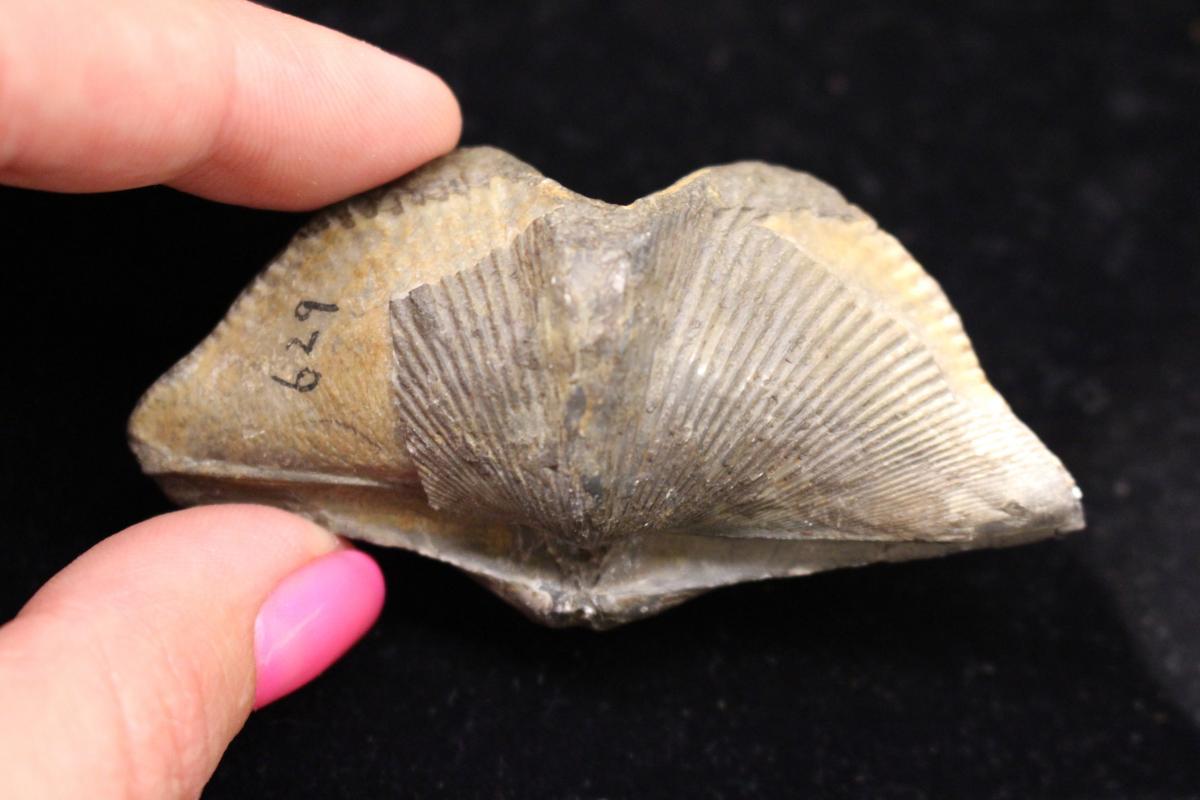Last week I gave you nothing but a shadow (and an epoch) and asked you to identify the casting fossil. Not at all to my astonishment, many of you got it. What exactly was it? A brachiopod, of course! When my paleo-memory was failing me, I had to describe it to curator Jessica as “one of those things that looks like the Batman symbol.” Miraculously, she understood me.

This particular brachiopod is Cyrtospirifer verneuilli from the Upper Devonian (382–372ish million years ago) of Belgium. Brachiopods have been around since the Cambrian and are very much still with us. The 300 or so living species tend to live in very cold waters, however, so it’s unlikely you’ve come across one on a warm, sunny beach. A fascinating thing about brachiopods is that they aren’t particularly closely related to bivalves (clams and oysters), though they certainly bear a superficial resemblance. Rather, they are closely related to the enigmatic (to me, anyway) bryozoans and the even-less-well-known phoronids. Brachiopods were most diverse during the Paleozoic, contributing to massive reef formations. They were—along with everything else around—devastated by the end-Permian extinction.
Congratulations to Dan Coleman, the first to get to brachiopod.
This week, shadow puppets; next week, performance art! I’ll record a video of myself acting out the lifestyle of my favorite fossil! (No, I will not. But that reminds me of a great day in my invertebrate paleontology class when we were required to come prepared with a poem or piece of performance art to share with the class … for a grade. I’ll never forget my professor scooting himself into a sleeping bag and then, when tapped by one of us, throwing out inflated long balloons. What was he? A sea cucumber, of course!)
Are you a teacher and want to tell us about an amazing free resource? Do you have an idea for a Misconception Monday or other type of post? Have a fossil to share? See some good or bad examples of science communication lately? Drop me an email or shoot me a tweet @keeps3.

